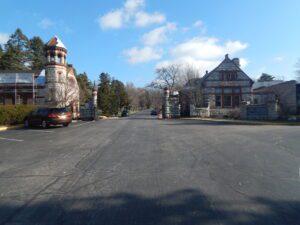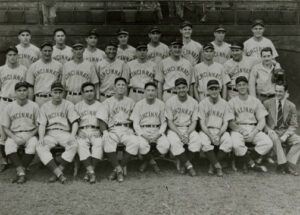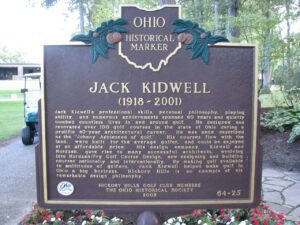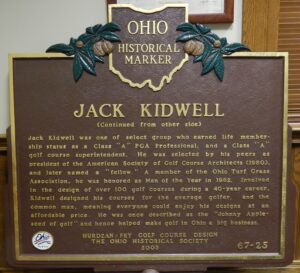, OH
When Sunbury was platted in 1816, a town square was set aside for public use with the intention of constructing a town hall on the site. The first two stories of the Town Hall were built, as a school, in 1868 for $5,000. The Masons added the third story for $1,500 and occupied it for 91 years, until a lodge was constructed. Since 1868, the Town Hall has served Sunbury as a village office building, jail, fire station, and community library. Church services as well as Farmer’s Institutes were held in the building, and at one time it housed a bank. In 2002, the Town Hall was renovated for use as a community room and village offices.
, OH
Founded in 1841, Woodland is one of the nation’s oldest rural garden cemeteries, the style of which was a dramatic departure from traditional church burial grounds at the time. Woodland’s oldest portion, including Victorian Era burial sections, a Romanesque gateway, and a Tiffany chapel, forms a district listed on the National Register of Historic Places. The Arboretum, with over 3,000 trees on more than 200 acres, completes this outdoor museum of Dayton history. Among those buried here are cemetery founder John Van Cleve, the Wright Brothers, inventors John Patterson and Charles Kettering, poet Paul Laurence Dunbar, Col. Edward Deeds, Governor James M. Cox, and humorist Erma Bombeck.
, OH
John Stewart Black (1891-1936) was a Vaudeville performer and songwriter who penned the classic “Paper Doll.” He is also remembered for “Dardanella,” which he called his “gift to the musical world.” “Dardanella”, recorded by the Ben Selvin Novelty Orchestra, debuted in 1919 and is believed to have sold more than five million copies. In 1942, the Piqua-born Mills Brothers recorded Black’s tune “Paper Doll.” It sold over 6 million records, was number one on the Billboard charts for twelve weeks in 1943 and became one of the most memorable records of the World War II era. Many artists, including Frank Sinatra and Bing Crosby, recorded “Paper Doll” and the song was inducted into the Grammy Hall of Fame in 1998.
, OH
The 1869 Cincinnati Red Stockings made history not only as the most dominant baseball club of its time, but also as the first band of professional ballplayers. Cincinnati’s decision to pay players proved to be a success, and other cities soon began establishing their own professional clubs throughout America. In 1876, the Reds joined the newly formed National League. Baseball soon became one of Cincinnati’s most popular entertainment venues, aided in part by the team’s World Series titles in 1919 and 1940. Cincinnati’s “Big Red Machine,” featuring players such as Johnny Bench, Joe Morgan, and Pete Rose, dominated baseball in the 1970s, picking up additional titles in 1975 and 1976. A surprise wire-to-wire title again in 1990 strengthened the Reds’ legacy and helped ensure future generations of Reds fans.
, OH
Self-educated golfer Jack Kidwell grew up in central Ohio. From 1937 until 1971, he owned and operated the Beacon Light Golf Course, where he started as a caddie. In 1943, he married Geraldine “Jerry” Kidwell, his wife of 57 years, and had four daughters, Sally, Shirley, Kathy, and Jody. Kidwell became a Class “A” golf course superintendent and earned life membership status as a Class “A”PGA professional. His peers selected Kidwell as president of the American Society of Golf Course Architects in 1980. A member of the Ohio Turf Grass Association, he was honored as Man of the Year in 1982. His accomplishments gained him induction into the Southern Ohio PGA Hall of Fame in 1977 and the Ohio Golf Association Hall of Fame in 1997.
, OH
Born on September 21, 1918, golf course architect Jack Kidwell attended Columbus Central High School where he became the Ohio School State Golf Champion in 1937. Kidwell was the owner and operator of Beacon Light Golf Course from 1937-1971. He was inducted into both the Southern Ohio PGA Hall of Fame and the Ohio Golf Association Hall of Fame in 1997. He was the founding father of Hurdzan/Fry Golf Course Design and the inspirational leader to this day. Kidwell was a true giant of the golf industry and has been named the person having the most influence on golf in the state of Ohio over the past 200 years. He was married to his wife Geraldine “Jerry” Kidwell for 57 years and they had four daughters, Sally, Shirley, Kathy, and Jody. Jack Kidwell died on April 29, 2001.







